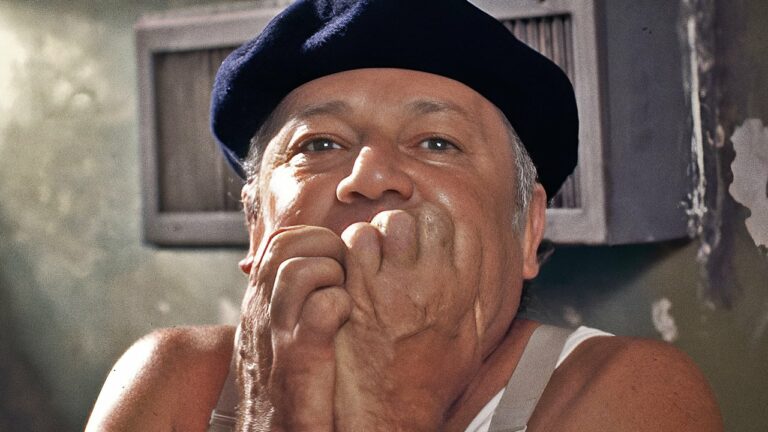
Plot Overview
Fire at Sea is a 2016 Italian documentary directed by Gianfranco Rosi that captures the life of the Sicilian island of Lampedusa, a frontline in Europe’s ongoing migrant crisis. The film offers a stark and unflinching view of the human cost of migration through the lens of the island’s residents, particularly a young boy named Samuele, whose daily life contrasts sharply with the suffering of migrants arriving by sea.
The film is divided into two parallel storylines: Samuele’s seemingly carefree existence on Lampedusa, and the harrowing accounts of refugees who survive perilous sea journeys from Africa to Europe. While Samuele enjoys the simplicity of island life, hunting with a slingshot and navigating his world of youthful curiosity, the film alternates between his experiences and the refugee crisis unfolding on the shores. As the migrants arrive, their stories are marked by desperation, loss, and survival.
Rosi’s documentary style is observational, often showing long, uninterrupted sequences that draw the audience into the environment of Lampedusa. His approach is contemplative, allowing viewers to make their own connections between the two worlds—the innocence of a child’s life and the brutal reality faced by those fleeing war, poverty, and violence.
Themes and Cinematic Style
The central theme of Fire at Sea is the intersection of personal and collective tragedy, which Rosi explores by contrasting the mundane with the extraordinary. The beauty of the island, framed by Rosi’s skillful cinematography, stands in stark opposition to the horrors witnessed by the migrants arriving on the boats. Rosi’s approach avoids overt political commentary, instead opting for a meditative tone that encourages viewers to reflect on the human consequences of the crisis.
The documentary is marked by Rosi’s use of a slow, deliberate pace. Long, lingering shots allow the audience to absorb the full weight of each moment. The film’s quiet nature invites contemplation, even as it underscores the urgency and scale of the refugee crisis. The use of natural sounds—waves crashing on the shore, the distant hum of a fishing boat, or the silence of a waiting crowd—also enhances the documentary’s immersive quality.
Critical Reception
Fire at Sea was met with widespread acclaim for its unflinching portrayal of the migrant crisis and its minimalist, poetic style. Critics praised Rosi for his ability to humanize a complex issue without resorting to sensationalism. The film won the Golden Bear at the 2016 Berlin International Film Festival, a testament to its emotional power and artistic merit.
Many reviews highlighted Rosi’s restrained direction. Peter Bradshaw of The Guardian called the film “a stunning, immersive documentary,” emphasizing its ability to evoke empathy without overt emotional manipulation. He also noted that Rosi’s refusal to provide easy answers or a clear moral framework made the film all the more powerful.
In The New York Times, A.O. Scott noted that Fire at Sea is “as much about the crisis of migration as it is about the way human beings live with tragedy and how we create meaning in the face of suffering.” The film’s contemplative nature led to comparisons with other great works of cinema that address the refugee experience, like The Act of Killing and The Look of Silence. However, Scott also pointed out that the film’s focus on Lampedusa’s isolated community made it feel uniquely anchored in a specific place, offering a portrait of everyday life amidst crisis.
Cinematic and Visual Impact
Rosi’s visual storytelling is one of the key elements of the film’s success. The lush landscapes of Lampedusa, which might seem idyllic at first glance, are shown with a sense of stillness and timelessness that contrasts with the restless waves of the Mediterranean Sea. The camera’s lingering shots of migrant boats, rescue operations, and the moments of quiet introspection for both Samuele and the refugees create a haunting visual tapestry.
The film’s careful balance between poetic imagery and social realism was noted in many reviews. Fire at Sea is not a traditional documentary but rather an experience, one that combines moments of profound beauty with brutal realism.
Conclusion: A Call for Reflection
Fire at Sea is an urgent and contemplative documentary that offers a unique perspective on the refugee crisis. Through its poetic and observational style, Gianfranco Rosi challenges the viewer to think deeply about the human toll of migration. The film’s refusal to sensationalize the migrant experience, combined with its powerful visual storytelling, makes it a poignant reflection on humanity’s shared responsibility toward those fleeing conflict and oppression.
Its success at international film festivals, combined with critical praise, underscores the universal relevance of the issues it explores. Fire at Sea does not provide easy answers but instead invites a quiet, reflective consideration of the crisis that continues to unfold on Europe’s shores.






